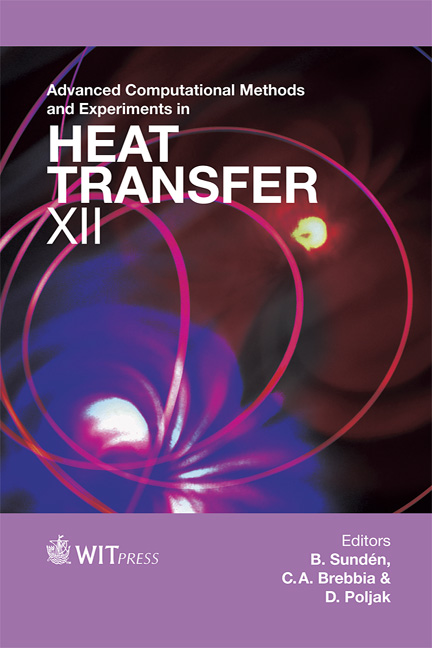Finite Element Predictions Of Residual Stresses Due To Heat Transfer During Welding
Price
Free (open access)
Transaction
Volume
75
Pages
12
Page Range
333 - 344
Published
2012
Size
443 kb
Paper DOI
10.2495/HT120291
Copyright
WIT Press
Author(s)
S. Syngellakis & A. Wu
Abstract
Finite element simulations of a single pass butt and a sequential fillet welding process are critically reviewed. Temperature history as well as welding-induced distortion and residual stress data from tests were compared to the results from the simulations for calibration and validation purposes. The main issue addressed was the sensitivity of the temperature and residual stress predictions to variations of heat input, temperature-dependent material properties as well as initial and boundary conditions. Key modelling features included an essentially 2D analysis combined with a ramped heat input function; modelling of radiation and fit-up; accounting for plastic properties variations in the welding area; the use of element death and re-birth technique to simulate sequential welding. Keywords: heat transfer, residual stresses, finite elements, butt weld, fillet weld, plasticity, temperature-dependent properties. 1 Introduction The prediction of welding-induced residual stresses and distortion is essential to the reliable design of welded joints; due however to the complexity of the welding process and the large number of modelling parameters involved, it often relies on simplifying assumptions and empirical relations. The experimental measurement of residual stresses has provided useful insight into their possible distribution and magnitude but the scope of such methods is necessarily limited due to their cost and potential error sources; most of them are also destructive and provide stress information at discrete points. A reliable and efficient numerical simulation of the welding process is thus considered as a more desirable alternative. This has already been attempted by many investigators; in-
Keywords
heat transfer, residual stresses, finite elements, butt weld, fillet weld, plasticity, temperature-dependent properties.





